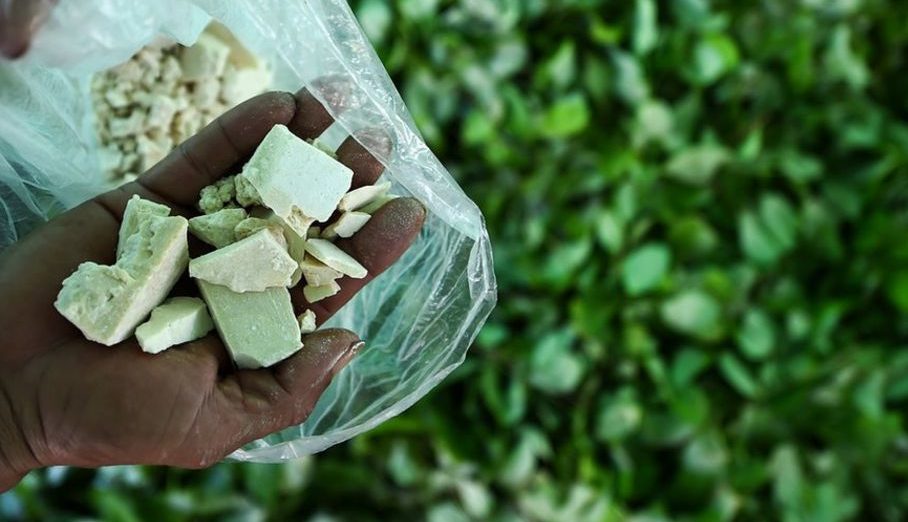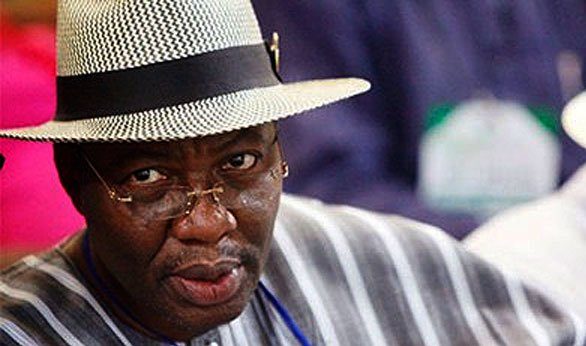Colombian cocaine production hit record levels in 2017, according to newly released UN statistics.
The UN Office on Drugs and Crime (UNODC) says production rose about 31% year on year to some 1,400 tonnes, cultivated on 171,000 hectares.
The agency warned production could harm recent peace-building efforts.
Colombia is the world’s largest producer of cocaine, much of which ends up in the US, which is the world’s largest consumer.
Gloria María Borrero Restrepo, Colombia’s justice minister, reportedly called the data “really very worrying.”
According to the UNODC report, the coca production acreage in Colombia last year was the highest ever recorded level, increasing by 25,000 hectares from 2016.
The total acreage under coca cultivation was an estimated 17% higher in 2017 than 2016.
The report said the potential production of cocaine had a value of $2.7bn (£2bn) in the local market.
The UN said the region bordering the Pacific Ocean in Colombia was the most intensively cultivated.
On its own, the state of Narino on the frontier with Ecuador has more farmland dedicated to coca than the whole of Peru, which is another large producer.
Eighty per cent of the coca has been grown in the same area for the past 10 years, while crops produce 33% more coca leaf – the main cocaine ingredient – than they did in 2012.
The country has fought for years against cocaine production, with the US providing around $400m annually to assist in Colombia’s war on drugs.
Last year, Colombia also signed a $300m agreement with the UN aimed at reducing the production of cocaine by compensating farmers who agree to switch from growing coca to safer crops.
In August, newly elected President Ivan Duque told reporters the government would create a new drug-fighting policy, saying the goal was to have “concrete results” in the next four years.
A scheme to use drones to spray coca crops with herbicide has, however, attracted criticism.
READ ALSO: Buhari, 87 other presidents to address UN Assembly
Pioneering US ballet dancer Arthur Mitchell dies at 84
Arthur Mitchell, one of the first black ballet dancers, has died in New York City at the age of 84.
The pioneering African-American dancer rose from a childhood in Harlem to perform leading roles under renowned choreographer, George Balanchine.
He was one of the most popular dancers with the New York City ballet in the 50s and 60s and was the first black dancer to gain international stardom.
Mitchell said his greatest achievement was bringing black people into ballet.
In 1969 he co-founded the Dance Theatre of Harlem, which was the first major classical ballet company in America to prioritise black dancers.
His earlier pairing with the white prima ballerina Diana Adams in 1957 caused a major stir in a country which was, at the time, riven by segregation.
In an interview earlier this year Mitchell, who lived in Manhattan, spoke of the early hostile reactions he had received from audiences before his talent ultimately won them over, leading to regular standing ovations.
“I danced myself into their hearts,” he said.
However he also pointed out that there was still just a tiny number of African-American ballerinas, commenting: “There’s still work to be done.”
Mitchell’s niece, Juli Mills-Ross, said his death had been caused by complications leading to heart failure.
The current director of the Dance Theatre of Harlem, Anna Glass, hailed Mitchell as a true visionary.
The theatre later paid tribute to the popular dancer in a tweet, saying that his legacy would live on.










